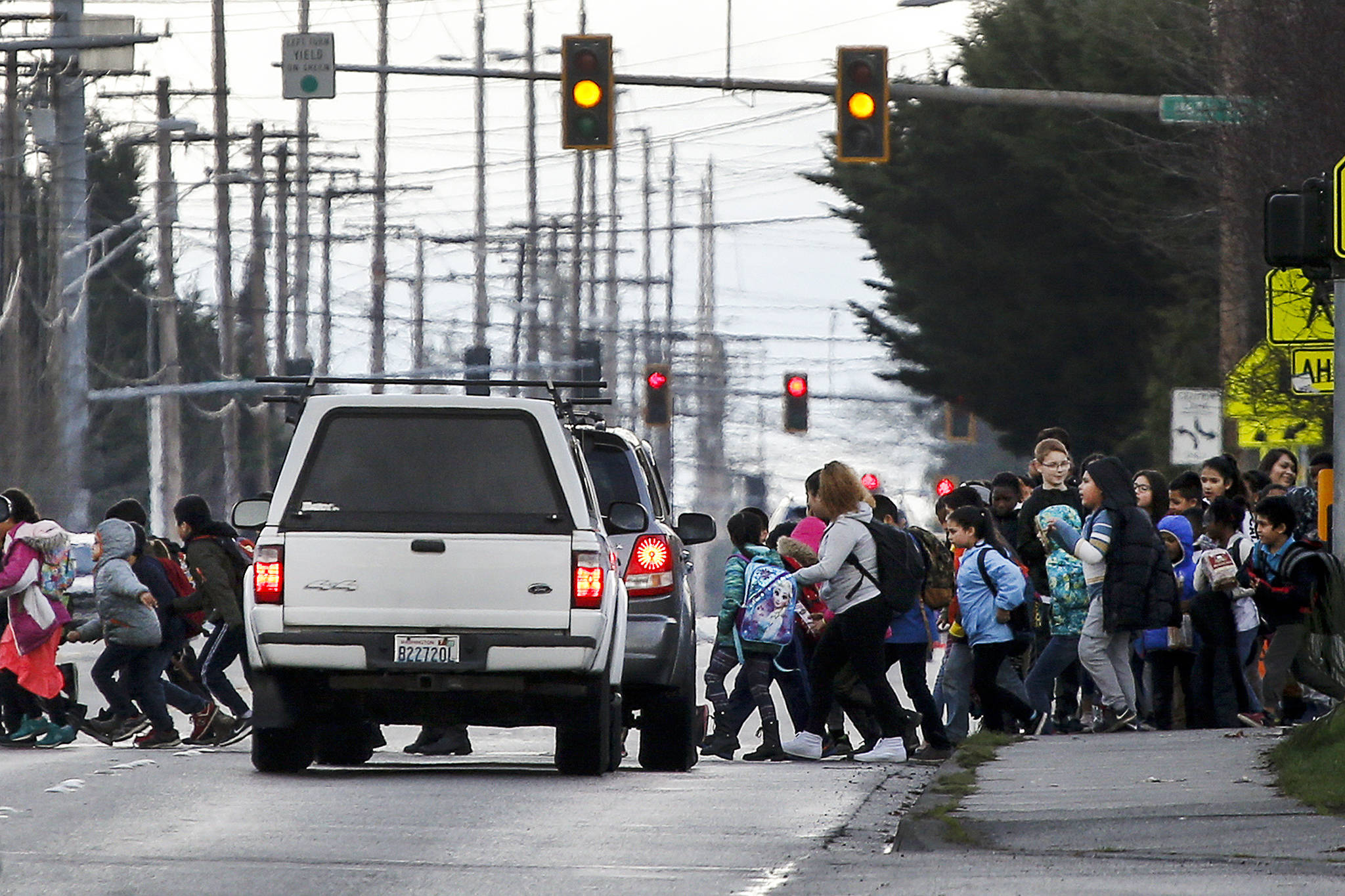By The Herald Editorial Board
Walking, we’re told, is good for our health, especially if we can hit that magic 10,000-steps-a-day mark.
It can help us get to or maintain a healthy weight; prevent or manage heart disease, high blood pressure, type 2 diabetes and other conditions; strengthen bones and muscle; and improve our balance and coordination as well as our mood, the Mayo Clinic advises. It may even help us think, as the heart pumps more blood to the brain.
It’s good advice, but there’s an increasing danger for pedestrians when their paths cross with those of motor vehicles.
Over the past decade pedestrian traffic fatalities have increased 27 percent, while traffic deaths overall have decreased by 14 percent, according to a state-by-state report on pedestrian fatalities by the Governors Highway Safety Association.
U.S. pedestrian deaths totaled 5,987 in 2016 and a preliminary 5,984 in 2017, up from 4,699 in 2007 and a low of 4,109 in 2009.
As a percentage of all traffic fatalities, the report shows, pedestrian deaths have steadily climbed from 11 percent of traffic deaths in 2007 to 16 percent in 2016.
Among the states, Washington state ranked among the top third of states for lowest incidence of pedestrian fatalities, 1.22 per 100,000 population, below the national average of 1.92 per 100,000, and well below New Mexico’s rate of 3.45 deaths per 100,000.
But more recent figures show Washington’s ranking may drop when preliminary numbers for 2017 are confirmed. For the first six months of 2017, the state’s pedestrian deaths increased 22 percent over the same period for 2016, putting it among the bottom third of states for the first half of 2017.
Eight of the state’s deaths in 2017 occurred in Snohomish County, out of 292 collisions involving pedestrians and motor vehicles, The Herald reported last month.
The report cites a number of factors that may account for the overall rise, including an increase in the number of people walking and a 1.6 percent increase in the miles driven by motor vehicles over the first six months of 2017, as compared to 2016.
Some factors can be addressed by traffic safety measures, but others are areas of responsibility for pedestrians and drivers, specifically increased smartphone use and legalized marijuana in some states.
Noting the lack of complete data, the report is careful not to make a direct correlation in either case, but the numbers provide enough reason for more monitoring and a reminder for personal responsibility. The report notes the parallel rise in smartphone-related emergency room visits from 2000 to 2012 and the overall increase in the number of smartphones and in text messaging.
And in Washington state, as well as other the six other states and the District of Columbia where recreational use of marijuana is now legal, those states combined showed a 16 percent increase in the first six months of 2017 as compared to the same period the year before. All other states, where recreational cannabis is not legal, showed a 5.8 percent decrease in pedestrian deaths during the same period.
Alcohol may still be a deadlier mix for pedestrians than cannabis, however. The report shows that alcohol was a factor in 46 percent of traffic accidents that resulted in pedestrian deaths in 2016, 13 percent where the driver was intoxicated but 33 percent where the pedestrian had a blood-alcohol level greater than the .08 standard for intoxication.
But there are measures that cities, counties and the state can address that would help improve pedestrian safety.
Statistics that should figure into responses by state and local government include:
About 73 percent of pedestrian deaths occurred on local city streets, county roads and state highways.
About 75 percent of pedestrian deaths in 2016 occurred during hours of darkness.
And in Washington state — where drivers are allowed to make a right turn on a red light after a full stop — 28 percent of pedestrian deaths occurred at intersections.
The report makes a number of recommendations to improve safety for pedestrians, including more sidewalks; countdown signals that provide ample time for crossing; pedestrian over- and underpasses; improved street lighting; high-visibility crosswalks; speed bumps, curb extensions and other traffic-calming measures; and increased law enforcement patrols focused on pedestrians as well as drivers.
Efforts in Spokane and Clark County are highlighted in the report. Spokane and Spokane County’s See and Be Seen campaign is a public education effort focused on encouraging pedestrians to get the attention of motorists. And Clark County has increased patrols and is citing drivers and pedestrians, and launched an education campaign to make that point.
The state’s Target Zero Task Force has provided $30,000 in grants to address pedestrian safety in Snohomish County, including increased patrols at intersections with a record of accidents and an educational campaign.
Thankfully, governments throughout the state appear to have taken pedestrian safety seriously when it concerns children on their walks to and from school. A 2016 report card by the Safe Routes to School National Partnership ranked Washington state among the nation’s top three states for students’ pedestrian safety.
But the increase in pedestrian deaths nationwide and in this state calls for more attention by local and state policymakers and by drivers and pedestrians alike.
Nobody should die trying to do something healthy.
Talk to us
> Give us your news tips.
> Send us a letter to the editor.
> More Herald contact information.

























